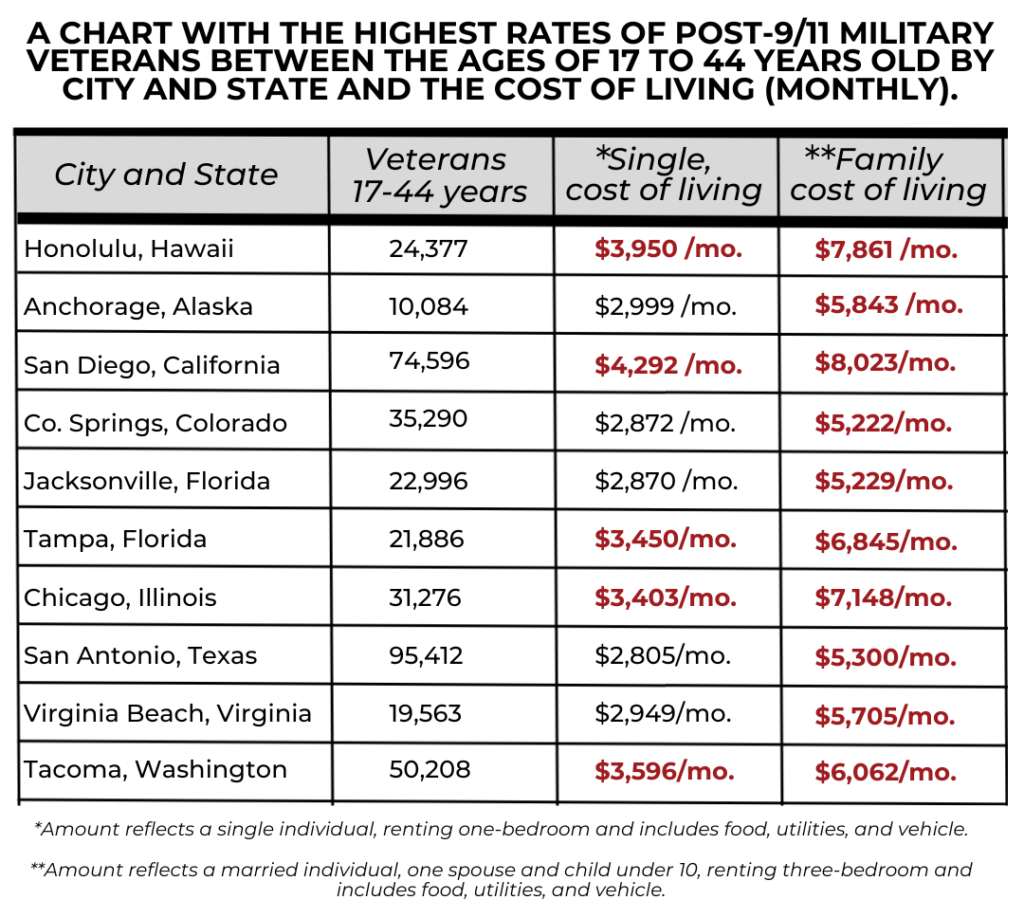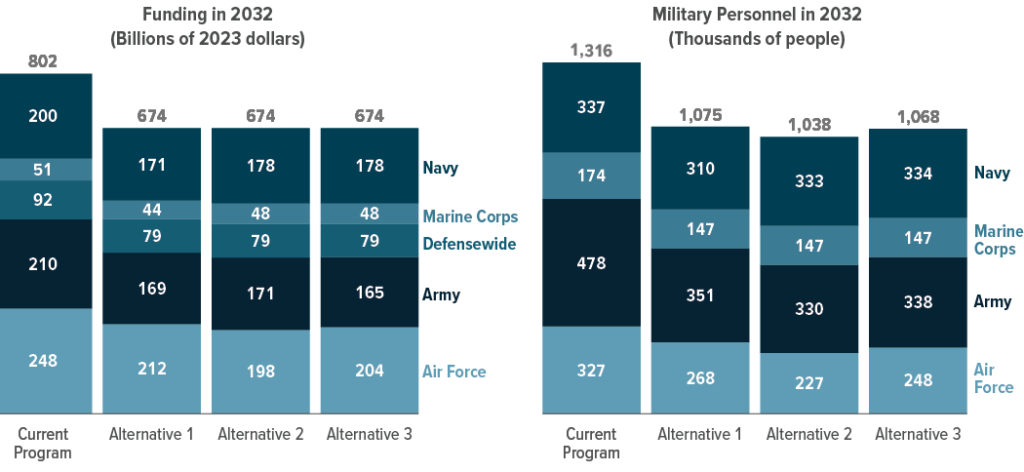On March 8th, President Biden stated his proposal will cut the nation’s deficit by nearly three-trillion dollars over 10 years as the federal debt will surpass the size of the United States economy within the next decade. Some concerns have been tossed around about cutting veterans benefits. This is HIGHLY unlikely and we doubt this will happen. However, we may see the quality, access and timeliness to care worsen.
At the request of the Congressional Committees on Budget (House and Senate), the “Congressional Budget Office” (CBO) will often issue a complied list of budgeting options to help those federal lawmakers in office in both the House and Senate make informed decisions and the implications in policy changes that would reduce the deficit.
This specific CBO report was published in December 2022, and the whole piece can be reviewed here. The “larger” volume of the report contains a detailed review of 17 options that would potentially lessen the debt by $300 billion over the next ten years. The “smaller” volume offers the same but shorter descriptions of 59 options to reduce the budget by less than $300 billion. It is unfortunate that many of these immediately lock in on health-related care and expenditures that would eventually negatively impact low-income, military veterans, and elderly populations.
Lets not forget the PACT Act debacle, where Senator Pat Toomey was accused of being anti-veteran, anti-healthcare, and just bashed for his outspoken concern in relation to the budget concern stating there was an additional $400 billion in non-veteran spending (check it out in the bill itself, Section 806(a)(b)). And, when you look at the CBO document on the PACT Act, between 2022 to 2031 (ten year period), what you see should make you upset:
- Health Care: $105.6 billion
- Compensation: $151.7 billion
- Discretionary Spending Classified as Direct Spending: $116.8 billion
- Current-Law Discretionary Spending Reclassified as Direct Spending: $396.6 billion
We are spending FOUR-TIMES the amount on “discretionary spending” than we are actual healthcare for our veterans. More so, we are paying out more in benefits and compensation rather than preventing the illness and injury in the first place. Does that make any sense?
THE POTENTIAL OPTION:
This option would require the VA to means-test all current and prospective recipients of VA disability compensation beginning in January 2024; after that date, veterans would receive total payments only if their gross household income in the year prior was less than the determined threshold. Disability benefits would be phased out constantly for veterans with incomes above thresholds. For individual veterans, the point would be set at $125,000 annual personal income to receive full benefits.
For every additional $2 above gross household income, disability would decrease by $1.
Veterans with a gross household income of $170,000 or higher in the calendar year 2023 would no longer receive any disability compensation from the VA in 2024.
There would be no adjustment in the income threshold for household size.
The current eligibility requirements and benefits would not change for the surviving family members of a veteran or service member.
According to the CBO proposal under “Option Component”, it states that roughly 1.5 million of the 5 million veterans receiving disability compensation had a household income that exceeded the $125,000 threshold of income in the United States in 2019, excluding VA disability payments. If this plan is selected, approximately 1 million veterans would no longer receive their disability and compensation benefits in 2024. Decreasing the ten year deficit by approximately 253 billion (half of that allocated to the PACT Act spending).
Another option in the CBO plan was to include VA disability payments as taxable income. Decreasing the ten year deficit by $160.8 billion, and to reduce the disability benefits for veterans who are older than 67 years by 30% – this one hurts the most ethically. Seeing how difficult it is for our elderly to continue to survive and thrive after retirement and to live solely on social security and pensions is hard enough. But, this would save $15.3 billion over ten years. Some others include:
- Require a disability rating of 30% or higher to receive compensation.
- Increase prescription drug copayments for all Veterans.
- End enrollment for VA Medical Care for Veterans in Priority Groups 7 and 8.
- Introduce enrollment fees in TRICARE for Life.
WHY THIS SUGGESTED PLAN WILL NOT WORK:
For numerous reasons, this suggested CBO budget plan will not work and will most likely only pass or move as far as what you are reading for multiple reasons. In turn, it may force the Department of Veterans Affairs to readjust to reflect “cost-of-living” in disability payments made to veterans in various states as they do with educational benefits that vary based on zip code.
We looked at the cost of living for a single individual and an individual with a spouse and young child in ten cities with the largest populations of post-9/11 military veterans (as of 2023). We found that even at 100% disabled and service-connected, five of the ten groups individually and zero of the families could not afford the “cost of living”.

Looking at the cost of living in some of these areas, you must think to yourself, how can anyone survive on this, especially with a family. We should be advocating for veterans to thrive, recover, and remain resilient. By allowing them to take one step forward, just to push them five steps back is disappointing. And we shouldn’t cut back on benefits and disabilities earned while in uniform to lessen the budget deficit. And most importantly, we shouldn’t focus so heavily on disability compensation as we should healthcare. If we looked more heavily into prevention and health promotion, early identification and illness screenings, maybe we wouldn’t be in this “Band-aid on a bullet hole” predicament.
THE MILITARY ON THE CHOPPING BLOCK
Veterans benefits are not the only thing being eyed on the chopping block. Other pieces to ease the financial debt burden over the next twenty years is targeting discretionary spending, titled “Reduce the Department of Defenses Annual Budget” – yikes.
In the proposal, and I quote: “Reducing DoD’s budget would require some combination of cutting the size of the force, purchasing fewer or less expensive weapons, reducing the cost of operating and maintaining equipment in service, and decreasing the costs of training personnel. This option encompasses three possible strategic approaches for configuring the military within the confines of a smaller budget” – so who would see the cuts?

In all three alternatives, only units in active duty would be affected. Units in the reserve forces and states National Guards would remain unchanged. According to CBO, “...preserving reserve forces would allow the military to retain the capacity and capabilities of a larger force at a lower cost. If international conditions changed or deterrence failed, reserve forces could be mobilized for combat operations, though more slowly than active forces could be…” – this reminds me of the Invasion of Iraq, and then the January 10th, 2007 “Surge”, where we actually had to enact the stop-lossing of troops due to an ill-prepared fighting force.
This option would heavily target the cuts in Army Aviation and Brigade Combat Teams and wipe out the “Security Forces Assistance Brigades” (SFAB, no one will complain). The Marine Corps would see a decrease in aircraft compliments and infantry battalions (despite already ridding the Corps of snipers). The Navy would most likely take the heaviest hit, as everything from amphibious ships, aircraft carriers and air wings, logistics ships, surface warfare ships, and submarines would all decrease from 13-19% overall. Lastly, the Air Force would lose close to a half of their tanker aircraft squadrons, and over a quarter of their cargo aircraft and fighter-attack squadrons.
Other items being assessed to save money include:
- Reduce size of bomber force by retiring B-1B.
- Introduce minimum out-of-pocket requirements in TRICARE.
- Reduce size of fighter force by retiring F-22.
- Reduce size of the Nuclear Triad and Cancel long-range standoff weapons.
- Cap increases in Basic Pay for military service members through 2028.
- Replace some military personnel with civilians.
- Defer B-21 bomber development.
We may be absolutely demolished at war, but at least we’ll save $1.1 trillion in the budget over the next ten years.
But in all seriousness, when push comes to shove, no one is going to advocate for you (or love you) like you will do for yourself. Reach out to your members of Congress, you can find your Congress members here, and your Senate members here. And, if you or your loved one is dealing with an illness, injury, or find your self in a predicament where the VA isn’t helping, let us know. Your health and wellness is our main priority.
